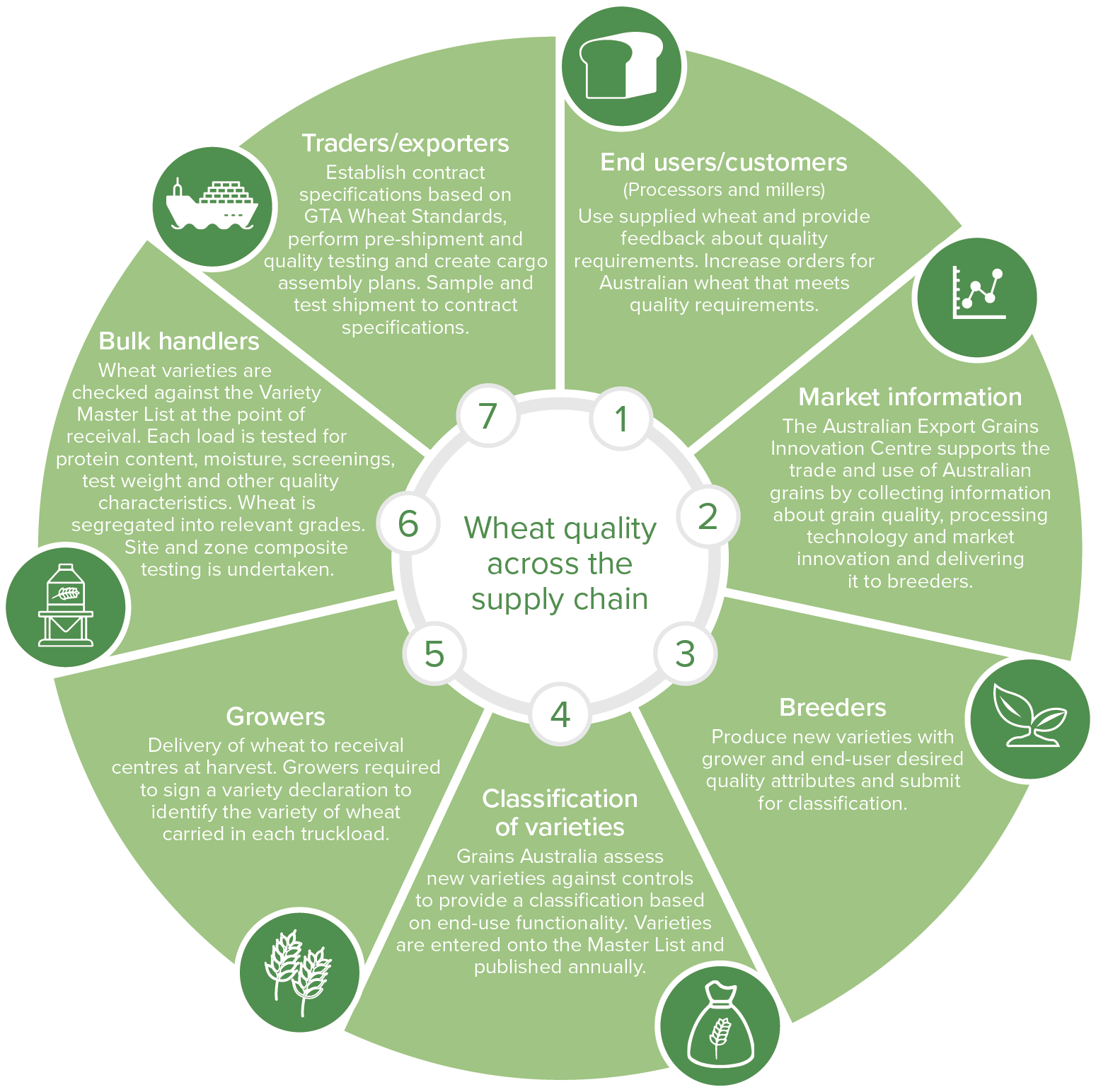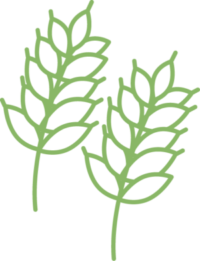Australia is a world leader in the production of quality, safe and clean, food-grade wheat.
Australian wheat is highly valued for its high performance across a full range of uses, including:
• Noodles
• Bread
• Pasta (Durum)
• Asian steamed products
• Sweet cakes, pastries and confectionery

Australian wheat classes deliver grain of consistent physical quality, processing performance and end-product quality.
Production
Wheat is Australia’s biggest grain crop and Australian growers produce an average of 25 million tonnes of wheat each year.
This accounts for 3% of the world’s wheat production and 10 to 15% of the world’s annual global wheat trade.
Find out more about Australian wheat at the Australian Export Grains Innovation Centre (AEGIC).

Wheat quality
Wheat quality refers to the performance of grain to meet the requirements of its use in flour milling, breads, noodles, cereals, pasta or animal feed. Quality is determined by the genetic attributes of the variety grown and the environmental conditions during crop growth.

Wheat Classification and Standards
Wheat classification measures the inherent qualities required for the grain’s end use, such as milling extraction, baking performance and noodle quality, and is assessed over multiple trials prior to the commercial release of a variety.
Grain Trade Australia’s (GTA) Wheat Standards require the measurement of physical characteristics of the grain such as protein, moisture, test weight and screenings along with minimum acceptable contaminants and defects. Compliance with the GTA Wheat Standards is based on post-harvest testing.
